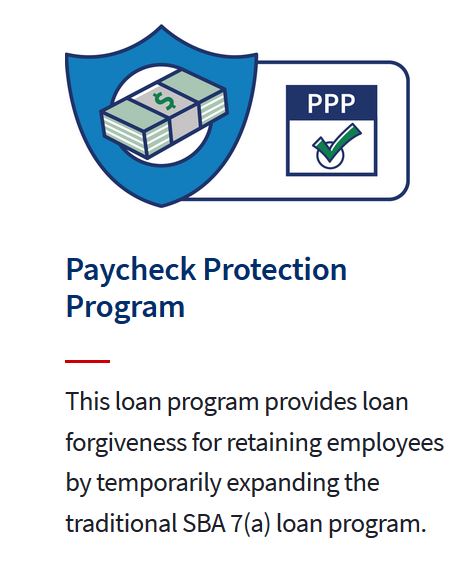An NTCA perspective on the CARES Act for companies with fewer than 500 employees
NTCA has been reviewing details as relates to new legislation enacted as a response to the COVID-19 crisis, and how it impacts our members and the tile industry at large.
This piece is an NTCA perspective on the Paycheck Protection Program aspect of the CARES Act and how members and small businesses can best take advantage of what is currently being offered by the government. Keep in mind that even though legislation has been passed, some details continue to change, and lenders are struggling to meet all the demand suddenly flooding in for loans. Your experience in applying for loans and the amount of time it takes you to receive funds may vary.

The CARES Act is over 830 pages long and has 16 laws attached to it. The main item we want to focus on involves the Paycheck Protection Program (PPP), which helps businesses keep their workforce employed for eight weeks during the Coronavirus outbreak.
This is also a potentially forgivable loan if you follow the guidelines. The SBA stipulates that at least 75% of the PPP loan must be used for payroll. Forgiveness is based on the employer maintaining or quickly rehiring employees and maintaining salary levels. Forgiveness will be reduced if full-time headcount declines, or if salaries and wages decrease.
The following steps can help you know what to expect as you navigate through the labyrinth of applying for a loan, obtain funds, and qualify for the forgivable loan status. This latter point is doubly important since loans that are forgiven – or portions of loans that are forgiven — are not counted as taxable income.
- Call Your Bank
- Ensure your bank is FDIC-insured and is approved to handle SBA loans and is able to handle PPP application.
- There is only $350 billion available in the PPP coffers so get your application in as quickly as possible.
- This is a fluid situation. The banks are on the front lines and are trying to navigate uncharted waters.
- Most banks are only working with customers they currently do business with. This is because there is a limited amount of money and they want to take care of their customers first.
- Once applications are submitted, they are assembled into a queue for the banks to sort out. This could take up to 10 days. Once submitted for approval, it could take up to 30 days for the funds to be deposited into your account.
- Go To Treasury Department for Information
- http://home.treasury.gov/policy-issues/top-priorities/cares-act/assistance-for-small-businesses
- You can access a fact sheet on PPP loan application form and get a downloadable form that may or may not be accepted by your lender. The advantage of accessing this form is that it will help you compile the information you need whether you use the SBA or lender form.
- The program application process is open to June 30. Due to limited funds, it is to your benefit to start this process as soon as possible.
- April 3rd was the date that many banks opened application process for small businesses.
- April 10th is the date that independent contractors and self-employed individuals can apply.
- Go to www.sba.gov for more information
- Check your company governance requirements and other lending commitments to ensure there is not a problem in applying for this loan
- The SBA form requires all owners with 20% stake or more in the company to answer questions on the loan (examples include bankruptcy, have they ever been barred or declared ineligible by any federal department or agency, have they been convicted of a felony, etc.)
- Calculate your payroll expenses
- To qualify for forgivable loan status, the amount you can borrow is 2.5 times your average monthly payroll from the previous year (2019).
- Payroll costs include salaries, wages, commission, tips, vacation, PTO, health care benefits, retirement benefits, state and local taxes. Payroll costs in the loan calculation do not include federal taxes.
- There is a cap on payroll for an employee making over $100,000 in 2019. You can only claim $100,000. That is salary; benefits are not counted. For example, an employee made $140,000, but you would only claim $100,000 when you calculate your payroll for the loan.
- How much are you eligible for? Add average total monthly payroll and divide by 12. Then multiply by 2.5.
- If you already applied for or were awarded an SBA Disaster Loan, you can add that amount to the PPP application. Note that the PPP loan has restrictions on how you spend the money.
- SBA Disaster Loans allow more freedom with how you use the loan money, but may not be forgivable, are subject to underwriting, and require personal guarantees attached to it. Visit sba.gov for details.
- Document and keep excellent records of paperwork used in your application
- Print and electronically store your records and have them available for submission if the bank requires these material or if the federal government later checks for fraud or misuse.
- Sign a certificate
- All owners with 20% stake will be asked to sign a statement certifying the funds are necessary and will be used for what the loan stipulates: to maintain or to hire staff back that was let go after February 15th, 2020.
- No collateral or personal guarantees will be required for these funds.
- This loan has a maturity of 2 years and an interest rate of 1% should it need to be paid back. However, funds should be forgivable if you document your paperwork, keep honest and thorough records, and use the money for what the PPP is designed for within the 8-week time frame.
- Make sure you use the funds for authorized purposes
- 75% needs to be used for payroll which includes costs related to group health care benefits and insurance
- Payments of interest but not principal on any mortgage obligation
- Rent (including rend or lease agreements)
- Utilities
- Interest on any other debt like equipment, vehicles, etc.
- Keep funds segregated into a designated account and use the funds to document a paper trail for the authorized uses listed above.
- Understand the impact of your past and possible future firings or layoffs of employees, or reduction or furloughs in their salaries.
- The PPP is designed to encourage employee retention and discourage layoffs and wage cuts. If you need to do massive amounts of layoffs or cuts, reconsider applying for PPP and investigate a different loan option at sba.gov.
- Talk to your accountant and lawyer about other tax credits or employee retention credits that may be available apart from the PPP loan.
- Keep up to date on changes or interpretations to the law.
- This is a very fluid situation, and things can change.
- Get legal and accounting advice and establish communication with your banker.
We will continue to post salient articles on legislation topics here. Also be sure to visit the Coronavirus Resource Page at tile-assn.com for links and ongoing information, designed to support you and your business.
Bart Bettiga is the Executive Director of the National Tile Contractors Association. Bettiga is a member of the Board of Governors of Coverings, one the largest tradeshows in North America. He has over 30 years of experience in the tile and stone industry and has served as the NTCA Executive Director since 2002. He is a well known speaker and author on ceramic tile and natural stone distribution and installation. He oversees the financial operations of the NTCA, TileLetter and the Ceramic Tile Education Foundation.








